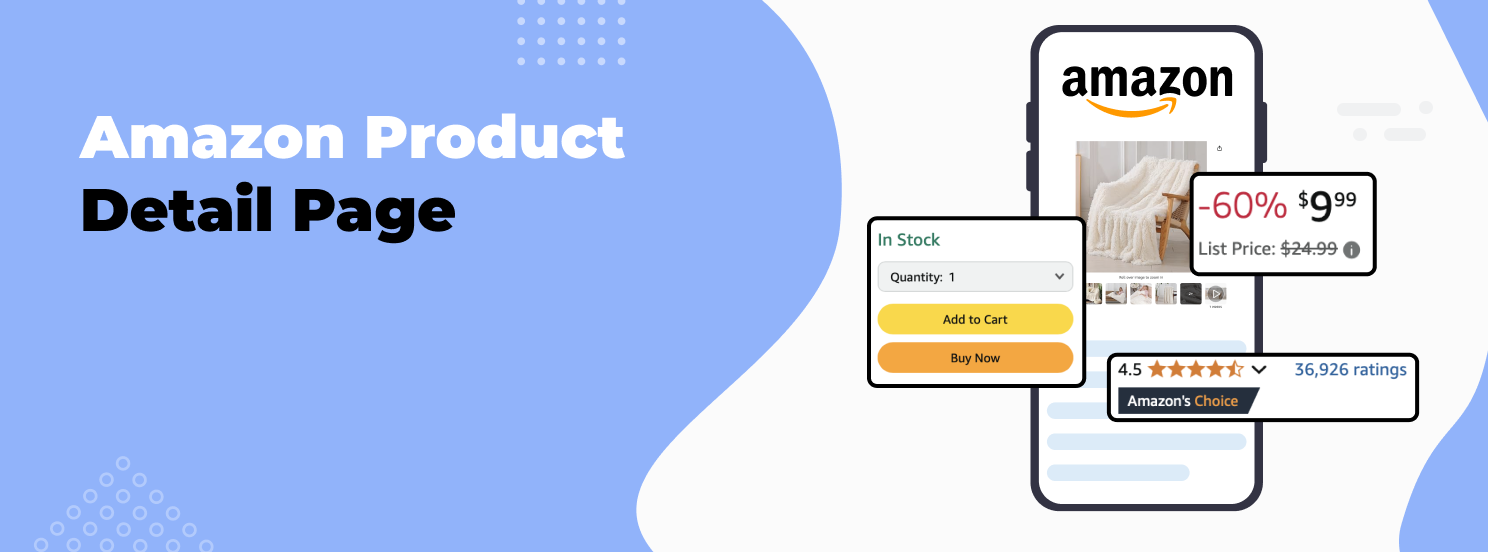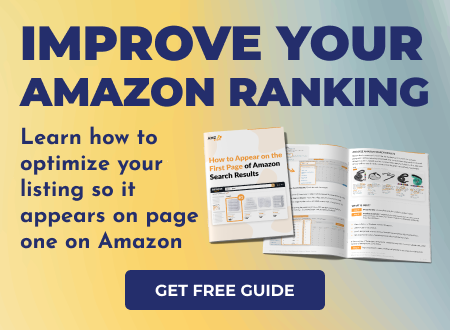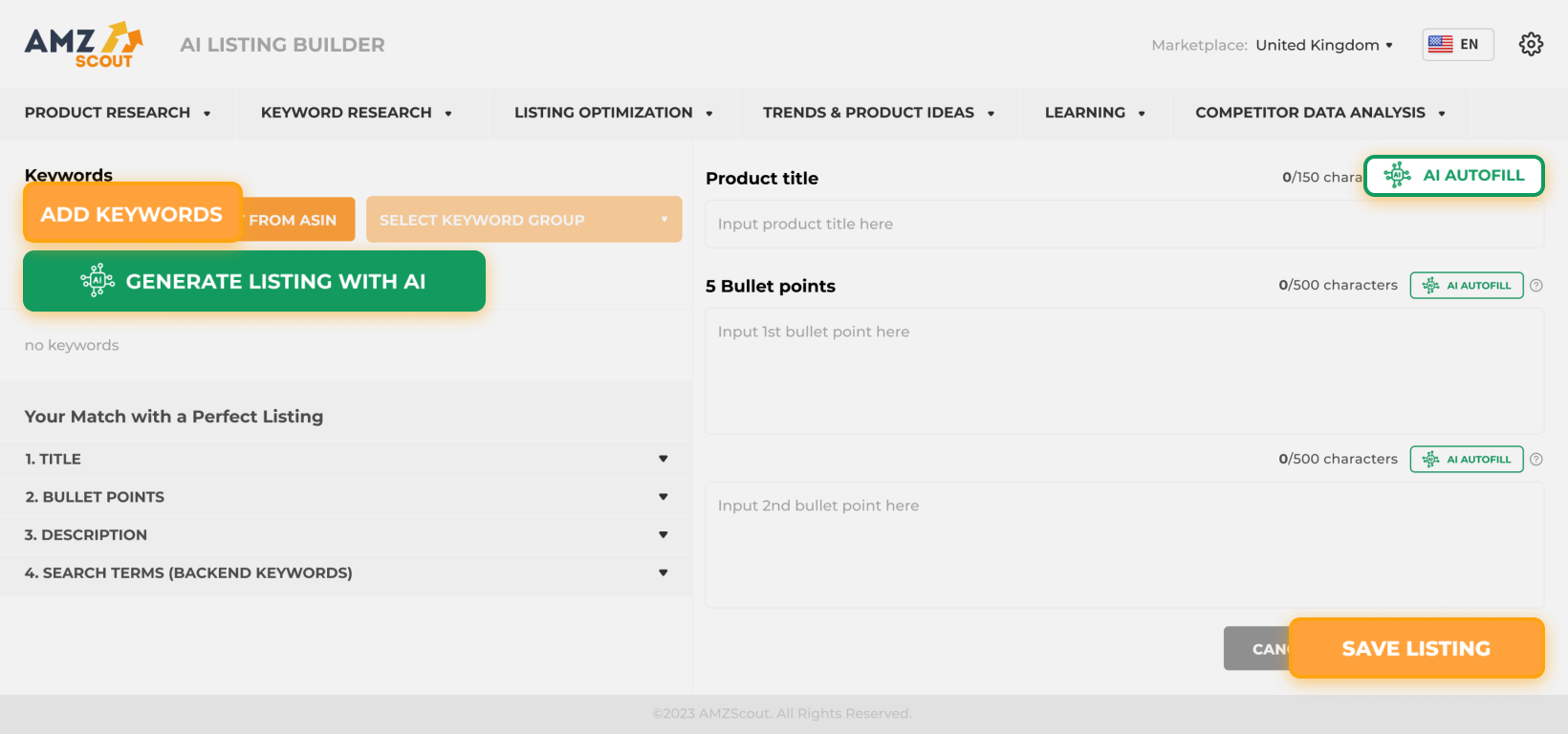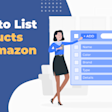
Tips for Optimizing Your Amazon Product Detail Page
Your Amazon product detail page is your 24/7 salesperson—it has the power to either convince shoppers to buy your product or send them straight to one of your competitors. A well-optimized page boosts your visibility, builds trust, and increases conversions. Achieving this requires a well-thought-out strategy to ensure every element works in your favor.
In this article, we’ll break down practices for effective optimization and share actionable tips to help you create an efficient listing.
Table of contents
What is a Product Detail Page on Amazon?
A Amazon Product Detail Page (PDP) on is a dedicated page that showcases a product that’s available for purchase. While your offer includes details about price, shipping, and promotions, the PDP itself mainly consists of text about the product and visuals.
The better your PDP is, the higher your chances will be of converting visitors into buyers, as clear, engaging content helps customers understand a product’s value so they can make confident purchasing decisions. Below, we’ll explore how to optimize your PDP based on the experiences of top sellers.
Best Practices for Optimizing Your Product Detail Page
An efficient product detail page (PDP) is easy to spot—it grabs buyers’ attention, persuades them to learn more, and ultimately drives sales. To achieve this, sellers can implement several key strategies. Here are the top three:
#1 Focus on Your Text
When working on your product detail page, the key elements to optimize include the title, product description, and bullet points. You can also add backend keywords, which are invisible to customers but help Amazon’s algorithm find your product. It’s important to keep the following in mind when optimizing your listing:
Follow all of Amazon’s rules: Avoid using prohibited keywords or symbols, and ensure that the length of your title and description stay within the required limits.
Make your text compelling: Your title should grab customers’ attention and motivate them to click, while the description and bullet points should be clear and highlight the product’s best features.
Include efficient keywords: Incorporate relevant and high-traffic keywords strategically to make your product visible in searches and improve its ranking.
Creating an optimized listing on your own can take a lot of time, and not everyone has the ability required to craft compelling text. That’s where specialized tools come in handy.
One of the top tools to accomplish this task is the AMZScout AI Listing Builder, which generates SEO-optimized, compelling text for your Amazon listings, as well as a list of backend keywords—all within seconds. Let's take a look at how to use this tool below.
Generating Effective Text for Your Amazon Product Detail Page
Creating a product listing on Amazon can be time-consuming, and often takes several hours of detailed work. However, with AI Listing Builder, this process can be completed in seconds, thanks to its advanced AI capabilities.
Here's how to use the tool:
1. Access the AMZScout AI Listing Builder.
2. Add keywords. You have two options for adding keywords:
Input keywords you've already gathered manually from your own research.
Enter your competitors' ASINs to import their keywords automatically, to save time and leverage their proven strategies.
3. Generate content with AI. Click on AI Autofill to quickly generate optimized product titles, bullet points, and descriptions that adhere to Amazon’s character limits while incorporating your selected keywords. You’ll also get a list of backend keywords.
Note: You might need to make a few adjustments to ensure that the content resonates with your target audience. Use the checklist at the bottom-left corner to make sure you comply with Amazon’s best practices.
4. Save your listing. Click ‘Save’ to get compelling, SEO-optimized text for your PDP.
The AMZScout AI Listing Builder allows you to create a standout listing that meets Amazon’s standards and increases your chances of success from the start. The tool is incredibly user-friendly and can save you time in the PDP optimization process.
This approach saves you time, boosts your store’s visibility, and makes it easier to stand out in the competitive Amazon marketplace while enhancing the overall customer experience.


#2 Optimize Your Visuals
Product images are the first thing customers notice, and optimizing them is crucial for increasing engagement. Here are a few tips to make your visuals more appealing:
Align your visuals with Amazon’s image size requirements: Make sure that your images are large enough for customers to zoom in and see the product details clearly.
Include videos: Videos create engagement and build trust, offering a more comprehensive view of your product.
Show the product in use: Display the product from multiple angles so customers can envision themselves using it.
Maintain a consistent style: Design your images and videos in the same style for a cohesive look.
It’s worth noting that 94% of customers won’t even consider a product if the visuals are missing or of poor quality. If you're unable to create your own high-quality visuals, consider outsourcing the task to a professional to ensure the best results.
To further improve your chances of success, consider testing mockups with your friends and family. Their feedback can help you make adjustments and enhance your product presentation.
#3 Use A+ Content
If you're enrolled in Amazon’s Brand Registry program, one powerful tool at your disposal is A+ Content. This feature allows you to enhance your product listings with additional visual and textual content, providing a unique opportunity to showcase your brand’s story and deliver more detailed descriptions.
For example, you can include key product details (like dimensions) directly on your images, helping customers better understand the product before making a purchase.
By including informative visuals, you not only capture buyers’ attention but also save them time by answering common questions right on the page. Best of all, A+ Content is free and offers pre-designed templates to simplify the process, making it a valuable tool for sellers to enhance their listings and boost sales.
Crafting a well-optimized listing is not a one-time task. It’s important to continuously monitor your product’s performance, track customer reviews, and adjust your listing to meet customer expectations.
How to Create a New Listing
Creating a new listing for your product on Amazon is necessary because you are the sole seller of your brand, and the product is not yet available in the marketplace. This process can vary slightly depending on whether you’re using the app or the web, as well as on the product category you are listing (some categories require special approval).
Here’s a general guide to the process:
1. Access your Amazon Seller Central account. Navigate to ‘Catalog’ and select ‘Add Products’. Instead of entering an existing item in the search field, you need to select ‘Create a New Listing’ under the search field to set up your product.
2. Add your product information.This step involves entering essential details about your product. You’ll need to complete several sections, such as:
Product identity: Provide identifiers such as the item’s name, UPC code, and more.
Description: Craft a compelling SEO-friendly product description along with concise bullet points that highlight its key features and benefits.
Product details: Include information like color, model number, dimensions, and material.
Offer: Set the quantity of items in stock, specify the price, and indicate the product’s condition (e.g., new, refurbished, etc.).
Safety compliance: Provide the country of origin, details about the warranty, and any other relevant information.
3. Review and submit: After completing all sections, review your listing for accuracy and completeness. Once you’re satisfied, click ‘Submit’ to finalize your listing.
It’s important to ensure that your product information is accurate and thorough. This will not only help to prevent returns and negative reviews, but also improve customer trust, leading to higher conversion rates.
Conclusion
A successful Amazon product page should resonate with both search engines and potential buyers, which can be achieved through an efficient title, bullet points and description. Consider using AMZScout to generate compelling, SEO-friendly texts in seconds. This approach boosts your item’s visibility and ultimately drives more sales.






